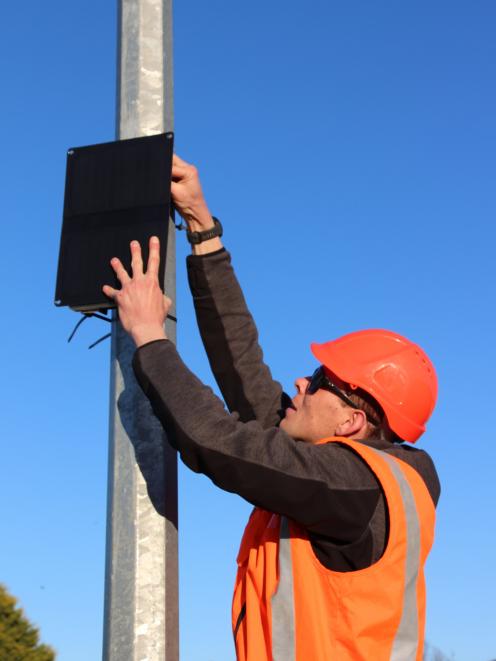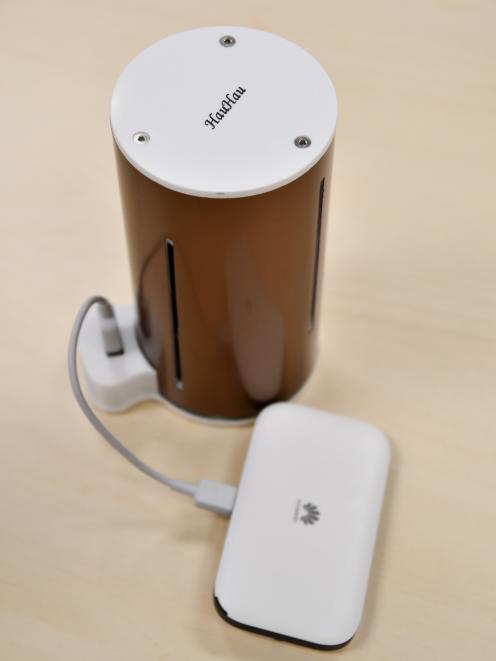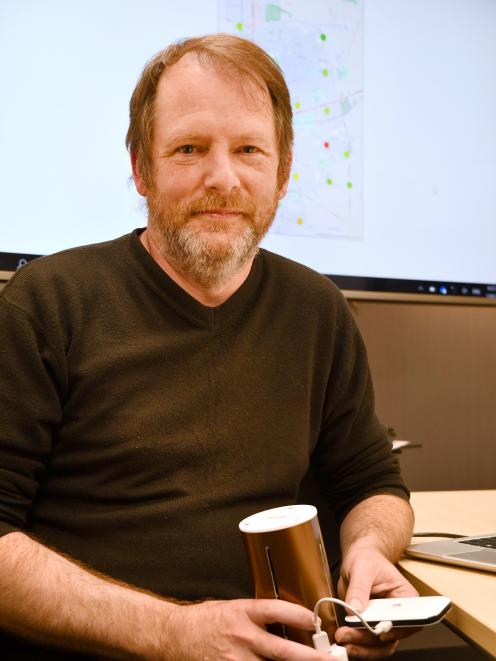
Southland weather is not known to be tropical.
To stay warm, residents use home heating.
However, the burning of wood, coal, gas, diesel and other materials has a down side for air quality as all of them release pollutants into the air.
Human health can be affected after exposure to the particles released, both over short periods and long-term.
These include PM10 (particles with a diameter of 10 micrometres or less) and PM2.5 (particles with a diameter of 2.5 micrometres or less).
University of Otago public health research associate professor Simon Hales said that, in general, it was widely accepted air pollution had a range of health impacts.
However, new effects on other organs were being discovered, he said.

"Traditionally, it was accepted it affected respiratory health but the effects on the cardiovascular system were potentially more important.
"The other way to think about air pollution was to look at how long it takes to have effects and what those effects are.
"People would be familiar with the idea that if you’re in a city that gets polluted at night ... you’d expect people to be getting slightly sicker the following day than would otherwise happen."
More important were the effects over the long term, as pollution increased rates of chronic diseases such as lung and heart disease.
It could mean people died before they otherwise would have, Prof Hale said.
Other factors included existing respiratory conditions and smoking habits.
"While people do tend to get upset about a particular polluted night, actually, we should be worried more about the overall long-term level of pollution."
In terms of the life-shortening effects, regulations and policies were having to change to account for what was most important, which was long-term average exposure more than the individual peaks, he said.
Regional councils and unitary authorities are responsible for managing air quality in New Zealand and are required to monitor areas where air quality is likely, or known, to exceed the standards.
Environment Southland (ES) air quality scientist Owen West said it had a number of measures in place to improve air quality, the most significant being the Southland Regional Air Plan it adopted in 2016.
The plan was mainly focused on home heating; it put in place rules to phase out older, less efficient heating appliances.
"This is a long-term process and requires the commitment of the community. It also needs to be supported by changes in behaviour, including people burning only dry wood, using their wood burners correctly and not dampening down fires at night," Mr West said.
The National Environmental Standards for Air Quality were introduced in 2004, and set a guaranteed minimum level of health protection nationwide.

After September 1 this year, the standards allowed for PM10 to exceed the threshold concentration once a year.
This winter, Invercargill had exceeded the standard 13 times, while Gore had exceeded it three times.
Mr West said it was difficult to say if ES was on track.
"We have had a higher number of exceedances of the standards this year, but recorded a more positive result last winter. The weather also has an impact, with cold, still days making it more likely smoke will linger in the air.
"However, we cannot control the weather so need to focus our efforts on the things we can change and we are seeing some change within the community, including increased pressure on wood suppliers for suitably dry firewood and a reduced tolerance for both smoky chimneys and outdoor burning which creates excessive smoke."
The project
In June, ES joined a National Institute of Water and Atmospheric Research (Niwa) project which aimed to gather data on air quality — 25 sensors were installed on street lights across Invercargill which would provide information on smoke patterns and particulate matter.
Mr West said it was exciting to be part of the joint project which would help provide more data than ES could have easily obtained with its own networks.
"This type of data is really important in helping us support communities to make the necessary changes to improve our air quality ... All of this information will enable us to support the community to better understand the issue and work towards cleaner air for Invercargill."
First in Alexandra, then in Arrowtown, the Community Air Watch project initially monitored air pollution outside but more recently had involved in-home monitoring.
Niwa principal scientist Ian Longley held a meeting earlier in the month to discuss the project with the community.
"One of the things we told the Government is there is still research to be done on air quality, we still have an air quality problem."

Part of a larger project which started in 2012, Dr Longley said they wanted to try the monitors in a larger city, particularly one where there was a known air quality problem.
"Officially, Invercargill’s air is polluted, it does not meet the standard ... In fifteen years, Invercargill has not met the target."
At last count, there were 15 other towns in the same boat.
"Invercargill is not the worst, but let’s say it is in the top five."
The second stage was to introduce monitors inside Invercargill homes, to get data on how indoor air varied between houses.
Named HauHau, the monitor could find out if smoke from outside was getting into the home, and determine how well the home was ventilated.
"Its really up to the community what they do with that evidence," Dr Longley said.
Those who attended the meeting at South Alive were invited to be involved in this second stage in Invercargill.
Seven monitors were sent down last Monday to be distributed among those interested, including several Aurora College pupils — Dr Longley spent time at the school talking with pupils.
The project was run as a trial this year and it was hoped it could be done at a larger scale next year for the full duration of winter.
Comments
Unfortunately for the residents of Otago, air pollution is not something the Otago Regional Council are really interested in. When was the last time they prosecuted someone for air pollution? They have just one poorly positioned monitor for the whole of Dunedin that doesn't even measure the most harmful air pollutants. Instead they spend a fortune on educating people to do the right thing, like they do when they catch farmers polluting - and we all know how well that's working for our waterways!
We don't need more research, we need more action.












